
Flying Cloud was a clipper ship that set the world's sailing record for the fastest passage between New York and San Francisco, 89 days 8 hours. The ship held this record for over 130 years, from 1854 to 1989.

Donald McKay was a Nova Scotian-born American designer and builder of sailing ships, famed for his record-setting extreme clippers.

Marco Polo was a three-masted wooden clipper ship, launched in 1851 at Saint John, New Brunswick. She was named after Venetian traveler Marco Polo. The ship carried emigrants and passengers to Australia and was the first vessel to make the round trip from Liverpool in under six months. Later in her career, the ship was used as a cargo ship before running aground off Cavendish, Prince Edward Island, in 1883.

The Pacific Mail Steamship Company was founded April 18, 1848, as a joint stock company under the laws of the State of New York by a group of New York City merchants. Incorporators included William H. Aspinwall, Edwin Bartlett, Henry Chauncey, Mr. Alsop, G.G. Howland and S.S. Howland.
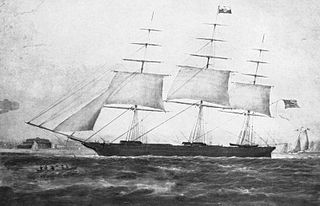
USS Nightingale was originally the tea clipper and slave ship Nightingale, launched in 1851. USS Saratoga captured her off Africa in 1861; the United States Navy then purchased her.

Northern Light was an American clipper ship. In 1853 it sailed from San Francisco, California to Boston, Massachusetts via Cape Horn with Captain Freeman Hatch at the helm in a record-setting 76 days, 6 hours. The record still stands for a single hull vessel. In 1993 the record was soundly broken by a multi-hull sailing vessel Great American II with no cargo. Sailing around Cape Horn is widely regarded as one of the most challenging routes in yachting, due to extreme weather, strong currents, and a historical reputation for mountainous seas and frequent severe storms.

Cremorne was a clipper ship of Sutton and Co.'s Dispatch Line and Coleman's California Line. She sailed between New York and San Francisco. Her services were advertised in sailing cards.
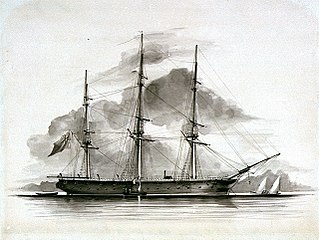
HMS Brisk was a 14-gun wooden-hulled screw sloop designed by the Committee of Reference as part of the 1847 program. She is considered an enlarged Rattler with the design approved in 1847. She was ordered on 25 April 1847 from Woolwich Dockyard as a 10-gun sloop, but the guns were later increased due to the Russian War, to 14 guns by increasing the number of 32-pounder guns. She was launched on 2 June 1851 from Woolwich Dockyard. She served in the Russian War of 1854- 55 and as part of the Southern African anti-slavery patrol, with a final commission on the Australian Station. She was sold in 1870 for use in a pioneer, but unsuccessful, telegraph service.

The Young America was built by William H. Webb of New York. She was launched in 1853, at the height of the clipper construction boom. She sailed in the California trade, on transatlantic routes, and made voyages to Australia and the Far East.

Kingfisher was an extreme clipper built in 1853 that sailed on the San Francisco route as well as to Hawaii on its way to China. It eventually sailed out of Uruguay. She was one of the longest lived clipper ships, with a sailing life of 36 years and 5 months. A sailing card advertised her.

White Swallow was an extreme clipper built in Boston in 1853 for the California trade.

Carrier Dove was an 1855 medium clipper. She was one of two well-known clippers launched in Baltimore that year, the other being Mary Whitridge.

The Memnon was the first clipper ship to arrive in San Francisco after the Gold Rush, and the only clipper to arrive in San Francisco before 1850. Built in 1848, she made record passages to San Francisco and to China, and sailed in the first clipper race around Cape Horn.
Antelope was a medium clipper built in 1851 in Medford, near Boston, Massachusetts. She sailed in the San Francisco, China, and Far East trades, and was known for her fine finish work and for her crew's escape from pirates. She is often called Antelope of Boston to distinguish her from the extreme clipper Antelope of New York launched in 1852.
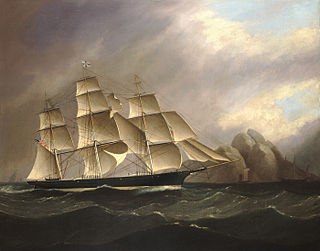
Ocean Telegraph was a clipper ship that was built in Massachusetts in 1854 and was last known of in Gibraltar in 1923. She was in US ownership until 1863, when UK interests bought her and renamed her Light Brigade.
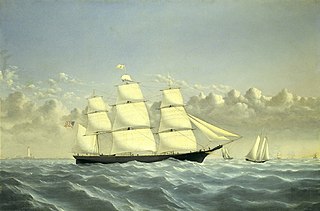
Golden West was an 1852 extreme clipper built by Paul Curtis. The ship had a very active career in the California trade, the guano trade, the coolie trade, the Far East, and Australia. She made a record passage between Japan and San Francisco in 1856.

Witch of the Wave was a long-lived extreme clipper in the California trade, with a sailing life of over 34 years. In 1851, she sailed from Calcutta to Boston in 81 days, setting a record. It was renamed the Electra in 1871.
Matoaka was a 1092-ton wooden New Brunswick full-rigged ship built in 1853 for Willis, Gunn, & Co. She was sold to Shaw, Savill, & Albion by 1859. Between 1859 and 1869 she made eight voyages to New Zealand. Her fastest run from Bristol to Lyttelton, New Zealand was 82 days in 1862. On 13 May 1869 she left Lyttelton for London under Captain Alfred Stevens with 45 passengers and 32 crew but was never seen again. In 1865 she was classed as 1322 tons.
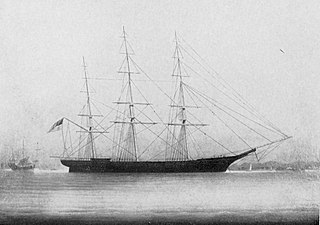
Gravina was an 818-register ton clipper ship built in Hoboken, New Jersey, in 1853. A rare example of a clipper built in the United States for foreign owners, Gravina was originally homeported in Spain, though commanded by an American.

Favorite or Favorita, was a 19th-century New York Sandy Hook pilot boat built in the early 1820s. She helped transport New York City maritime pilots between inbound or outbound ships coming into the New York Harbor. Favorite collided with a United States steamer and sank in 1865 near Barnegat Lighthouse.





















